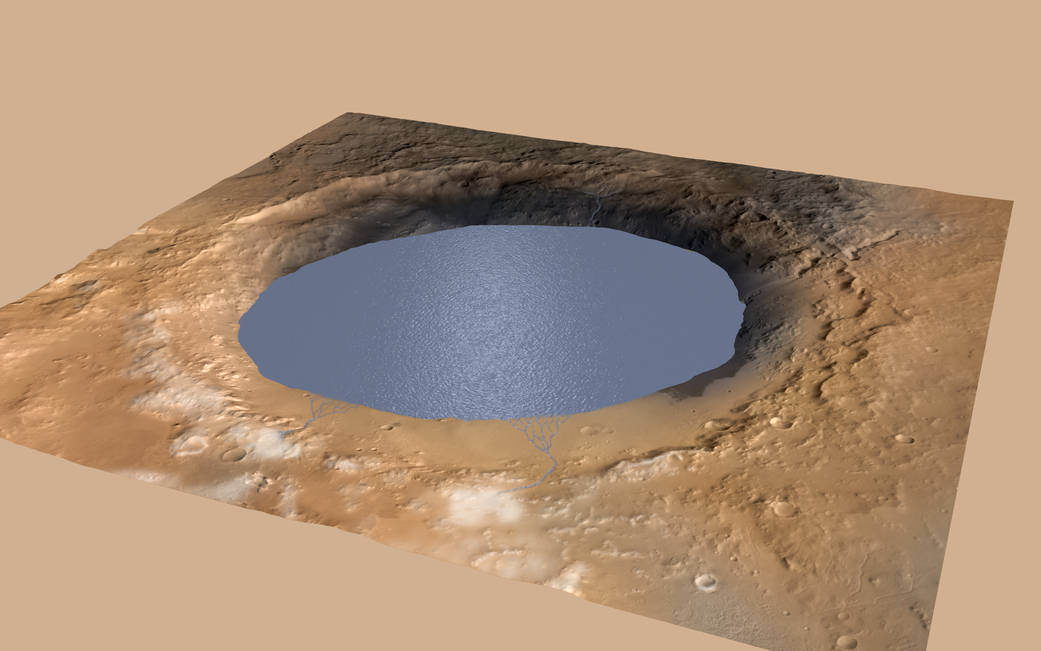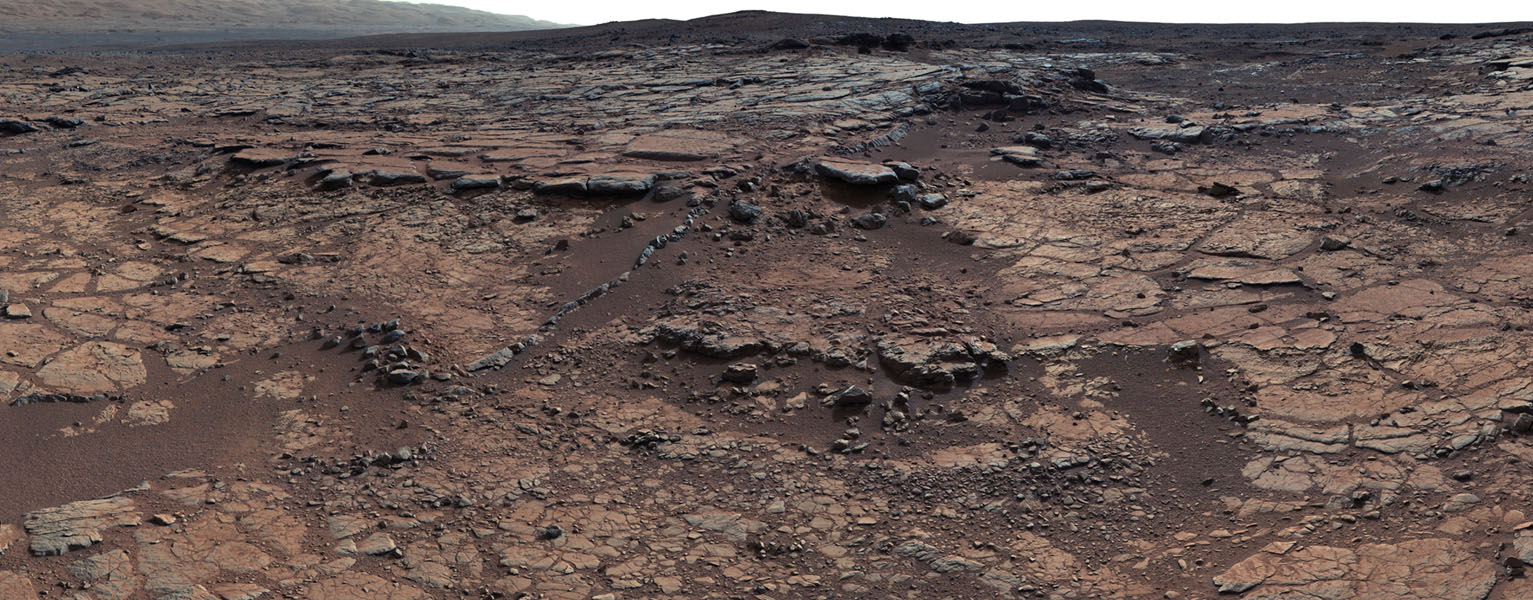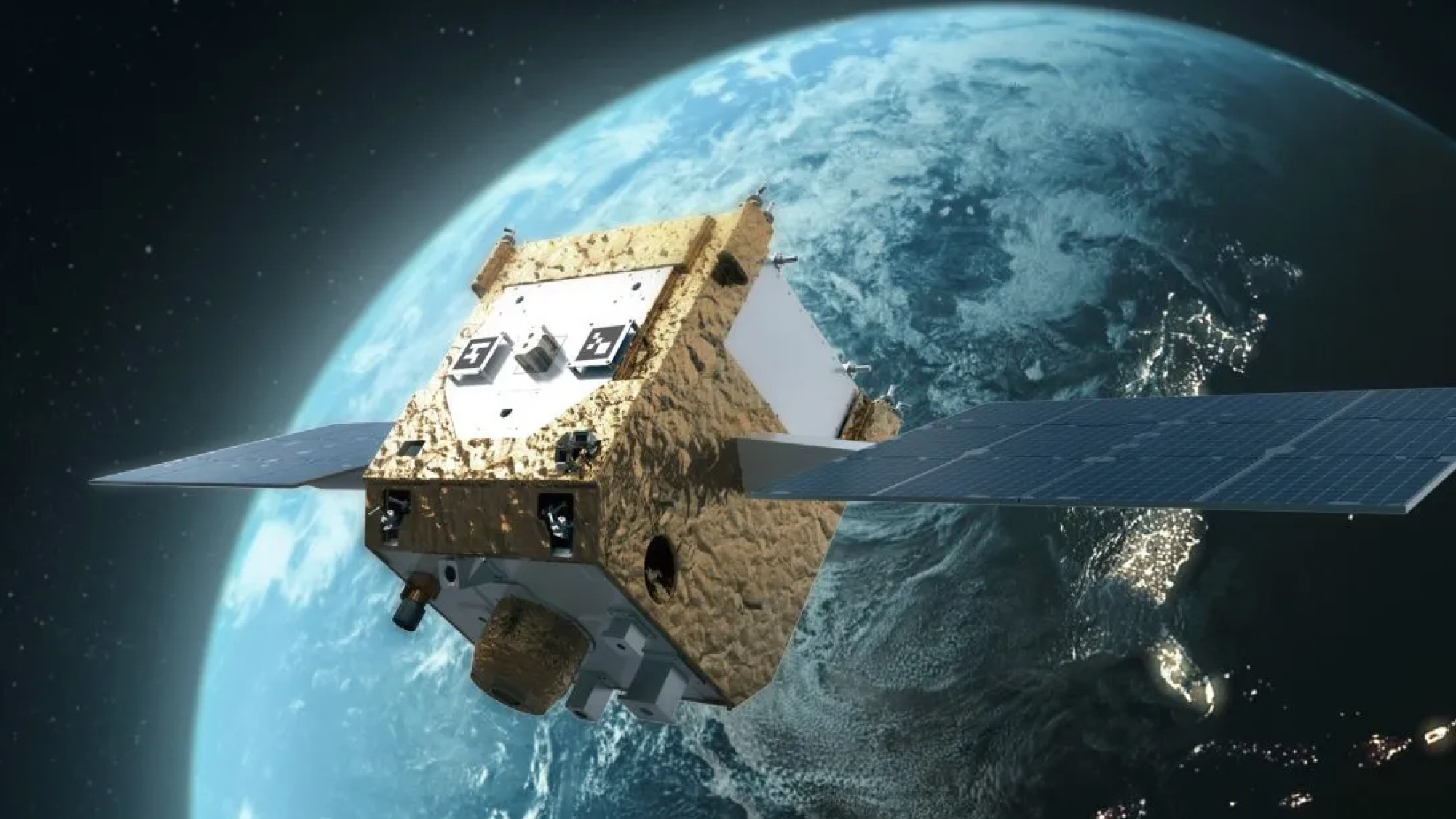Mars Mystery: How Was Ancient Red Planet Warm Enough for Liquid Water?

The mystery of how Mars could have once had water flowing on its surface is now deepening, as a new study reveals that the Red Planet's early atmosphere likely possessed up to hundreds of times less carbon dioxide than needed to keep it warm enough for liquid water to last.
Although Mars is now cold and dry, there are decades of evidence suggesting that the Red Planet's surface was once covered with rivers, streams, ponds, lakes and perhaps seas and oceans. Dark, narrow lines seen on Mars even hint that water could run down some of its slopes every spring. There is life virtually wherever there is water on Earth, so these findings raise the possibility that Mars was once a home to life, and might host it still.
"The watery environments that once occupied the floor of Gale Crater look like they were pretty hospitable to life — not too hot, not too cold, not too acid, not too alkaline, and the water probably was not too salty," said study lead author Thomas Bristow, a planetary scientist at NASA's Ames Research Center in Moffett Field, California. [Photos: Ancient Mars Lake Could Have Supported Life]

Ancient Mars must have been much warmer than the planet is today for such environments to persist, many scientists think. As such, prior work sought to look for signs that Mars once possessed ample amounts of greenhouses gases such as carbon dioxide in its atmosphere, which trap heat from the sun.
However, analyses of data taken from orbit above Mars suggested little in the way of the carbonate minerals on the Martian surface that one would expect to find if its atmosphere were once richer in carbon dioxide. To help solve this mystery, scientists examined data collected from the Red Planet's surface by NASA's Curiosity rover as it traversed the lower slopes of the mountain Aeolis Mons (known informally as Mount Sharp), which rises about 3.4 miles (5.5 kilometers) high from the center of Gale Crater.
The researchers analyzed Martian mudstones, siltstones, sandstones and other sedimentary rocks deposited by lakes and rivers on the floor of Gale Crater about 3.5 billion years ago. They did not detect carbonates, suggesting that atmospheric levels of carbon dioxide back then were tens to hundreds of times lower than those required by climate models to warm early Mars enough to keep liquid water on its surface.
These findings do not suggest that ancient Mars wasn't wet, study team members said. "The sedimentary evidence at Gale Crater is indisputable in showing the prolonged presence of liquid water on the surface of early Mars," Bristow told Space.com.
Get the Space.com Newsletter
Breaking space news, the latest updates on rocket launches, skywatching events and more!
One possible explanation for this discovery is that Mars once did have carbonates on its surface that were later destroyed. However, "the nature of the minerals in the samples we focused on don't support that conclusion," Bristow said. "They don't show any sign of suffering an acidic attack that could have dissolved any carbonates there in the past."
Another possibility is that early Mars was warmed by other greenhouse gases, such as sulfur dioxide, methane or nitrous oxide.
"The downside of all these other greenhouse gases is that they tend to be quite reactive, so when you put them in the atmosphere, they don't hang out an especially long time," Bristow said. "So the warming periods driven by those kinds of greenhouse gases are relatively short-lived, which is not consistent with observations from Gale Crater where we have evidence for lakes and rivers that persisted for hundreds of thousands or even millions of years."
Other scenarios that might explain the water of early Mars include ice caps that could have kept liquid water insulated under them, or a change in the Martian orbit that made the Red Planet warmer. "Our findings mean that scientists have to think a bit more deeply about what kind of mechanisms could lead to stabilization of surface water," Bristow said.
Future research will analyze more data that Curiosity is collecting as it makes its way up Aeolis Mons.
"It looks like the rover should be sampling the rock record of ancient Mars during a climatic transition as it dried out and cooled down," Bristow said. "We are hoping to get more clues as to how the early Martian climate system operated."
The scientists detailed their findings online today (Feb. 6) in the journal Proceedings of the National Academy of Sciences.
Follow Charles Q. Choi on Twitter @cqchoi. Follow us @Spacedotcom, Facebook and Google+. Original article on Space.com.
Join our Space Forums to keep talking space on the latest missions, night sky and more! And if you have a news tip, correction or comment, let us know at: community@space.com.

Charles Q. Choi is a contributing writer for Space.com and Live Science. He covers all things human origins and astronomy as well as physics, animals and general science topics. Charles has a Master of Arts degree from the University of Missouri-Columbia, School of Journalism and a Bachelor of Arts degree from the University of South Florida. Charles has visited every continent on Earth, drinking rancid yak butter tea in Lhasa, snorkeling with sea lions in the Galapagos and even climbing an iceberg in Antarctica. Visit him at http://www.sciwriter.us









